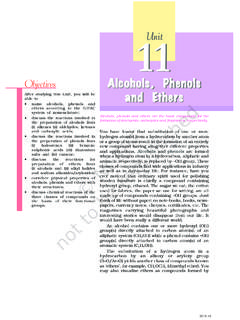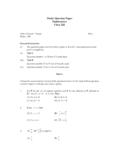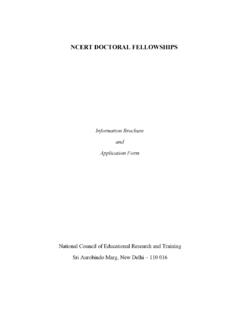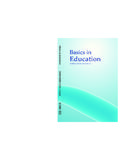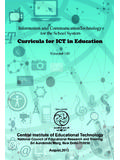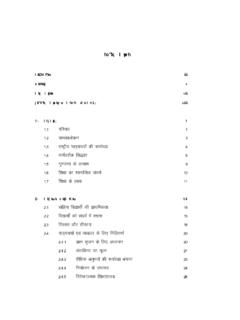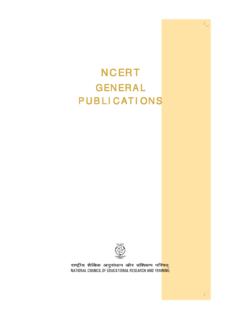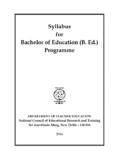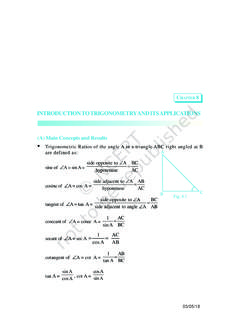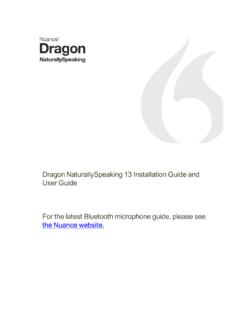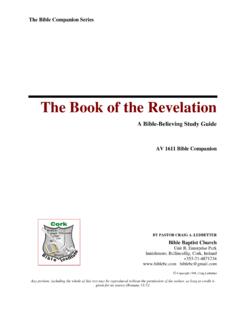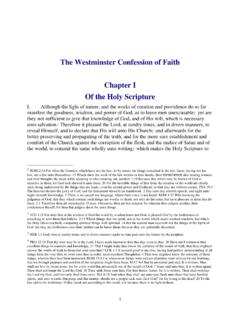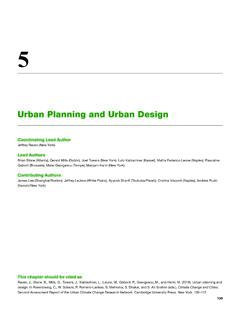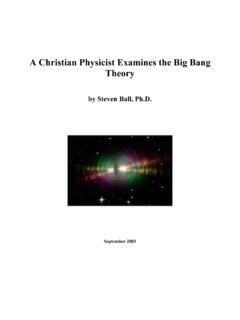Transcription of Framing the Constitution THEME FIFTEEN - NCERT
1 The Indian Constitution , which came into effect on 26 January 1950,has the dubious distinction of being the longest in the world. Butits length and complexity are perhaps understandable when oneconsiders the country s size and diversity. At Independence, Indiawas not merely large and diverse, but also deeply Constitution designed to keep the country together, and to take itforward, had necessarily to be an elaborate, carefully-worked-out,and painstakingly drafted document. For one thing, it sought toheal wounds of the past and the present, to make Indians of differentclasses, castes and communities come together in a shared politicalexperiment.
2 For another, it sought to nurture democratic institutionsin what had long been a culture of hierarchy and Constitution of India was framed between December 1946and November 1949. During this time its drafts were discussed clauseby clause in the Constituent Assembly of India. In all, the Assembly Fig. Constitution was signed in December 1949 after three years of The years immediately preceding the making of theConstitution had been exceptionally tumultuous: atime of great hope, but also of abject 15 August 1947, India had been made free, but ithad also been divided. Fresh in popular memory werethe Quit India struggle of 1942 perhaps the mostwidespread popular movement against the BritishRaj as well as the bid by Subhas Chandra Bose towin freedom through armed struggle with foreign even more recent upsurge had also evoked muchpopular sympathy this was the rising of the ratingsof the Royal Indian Navy in Bombay and other citiesin the spring of 1946.
3 Through the late 1940s therewere periodic, if scattered, mass protests of workersand peasants in different parts of the striking feature of these popular upsurges wasthe degree of Hindu-Muslim unity they contrast, the two leading Indian political parties, theCongress and the Muslim League, had repeatedly failedto arrive at a settlement that would bring about religiousreconciliation and social harmony. The Great CalcuttaKillings of August 1946 began a year of almostcontinuous rioting across northern and eastern India(see Chapters 13 and 14). The violence culminatedin the massacres that accompanied the transfer ofpopulations when the Partition of India was Independence Day, 15 August 1947, there wasan outburst of joy and hope, unforgettable for thosewho lived through that time.
4 But innumerableMuslims in India, and Hindus and Sikhs in Pakistan,were now faced with a cruel choice the threat ofFig. of desolation and destructioncontinued to haunt members of theConstituent eleven sessions, with sittings spread over 165 days. Inbetween the sessions, the work of revising and refining the draftswas carried out by various committees and your political science textbooks you know what theConstitution of India is, and you have seen how it has workedover the decades since Independence. This chapter will introduceyou to the history that lies behind the Constitution , and theintense debates that were part of its making. If we try and hearthe voices within the Constituent Assembly, we get an idea of theprocess through which the Constitution was framed and the visionof the new nation sudden death or the squeezing of opportunities onthe one side, and a forcible tearing away fromtheir age-old roots on the other.
5 Millions of refugeeswere on the move, Muslims into East and WestPakistan, Hindus and Sikhs into West Bengal andthe eastern half of the Punjab. Many perishedbefore they reached their , and scarcely less serious, problem facedby the new nation was that of the princely the period of the Raj, approximately one-thirdof the area of the subcontinent was under the controlof nawabs and maharajas who owed allegiance tothe British Crown, but were otherwise left mostlyfree to rule or misrule their territory as theywished. When the British left India, the constitutionalstatus of these princes remained ambiguous. As onecontemporary observer remarked, some maharajasnow began to luxuriate in wild dreams of independentpower in an India of many partitions.
6 This was the background in which theConstituent Assembly met. How could the debateswithin the Assembly remain insulated from whatwas happening outside? The making of the Constituent AssemblyThe members of the Constituent Assembly were notelected on the basis of universal franchise. In thewinter of 1945-46 provincial elections were held inIndia. The Provincial Legislatures then chose therepresentatives to the Constituent Constituent Assembly that came into beingwas dominated by one party: the Congress. TheFig. Nehru speaking in theConstituent Assembly at midnighton14 August 1947It was on this day that Nehru gavehis famous speech that began withthe following lines: Long years ago we made a trystwith destiny, and now the timecomes when we shall redeem ourpledge, not wholly or in fullmeasure, but very the stroke of the midnight hour,when the world sleeps, India willawake to life and freedom.
7 2022-23 Fig. Constituent Assembly insessionSardar Vallabh Bhai Patel is seensitting second from swept the general seats in the provincialelections, and the Muslim League captured most ofthe reserved Muslim seats. But the League chose toboycott the Constituent Assembly, pressing itsdemand for Pakistan with a separate Socialists too were initially unwilling to join,for they believed the Constituent Assembly was acreation of the British, and therefore incapable of beingtruly autonomous. In effect, therefore, 82 per centof the members of the Constituent Assembly werealso members of the Congress however was not a party with onevoice. Its members differed in their opinion on criticalissues.
8 Some members were inspired by socialismwhile others were defenders of landlordism. Somewere close to communal parties while others wereassertively secular. Through the national movementCongress members had learnt to debate their ideasin public and negotiate their differences. Within theConstituent Assembly too, Congress members did notsit discussions within the Constituent Assemblywere also influenced by the opinions expressed bythe public. As the deliberations continued, thearguments were reported in newspapers, and theproposals were publicly debated. Criticisms and2022-23 counter-criticisms in the press in turn shaped thenature of the consensus that was ultimatelyreached on specific issues.
9 In order to create a senseof collective participation the public was also askedto send in their views on what needed to be of the linguistic minorities wanted theprotection of their mother tongue, religiousminorities asked for special safeguards, while dalitsdemanded an end to all caste oppression andreservation of seats in government bodies. Importantissues of cultural rights and social justice raisedin these public discussions were debated on the floorof the The dominant voicesThe Constituent Assembly had 300 members. Of these,six members played particularly important were representatives of the Congress, namely,Jawaharlal Nehru, Vallabh Bhai Patel and RajendraPrasad.
10 It was Nehru who moved the crucial Objectives Resolution , as well as the resolutionproposing that the National Flag of India be a horizontal tricolour of saffron, white and darkgreen in equal proportion , with a wheel in navyblue at the centre. Patel, on the other hand, workedmostly behind the scenes, playing a key role in thedrafting of several reports, and working to reconcileopposing points of view. Rajendra Prasad s role wasas President of the Assembly, where he had to steerthe discussion along constructive lines whilemaking sure all members had a chance to this Congress trio, a very important memberof the Assembly was the lawyer and economist During the period of British rule,Ambedkar had been a political opponent of theCongress; but, on the advice of Mahatma Gandhi,he was asked at Independence to join the UnionCabinet as law minister.
